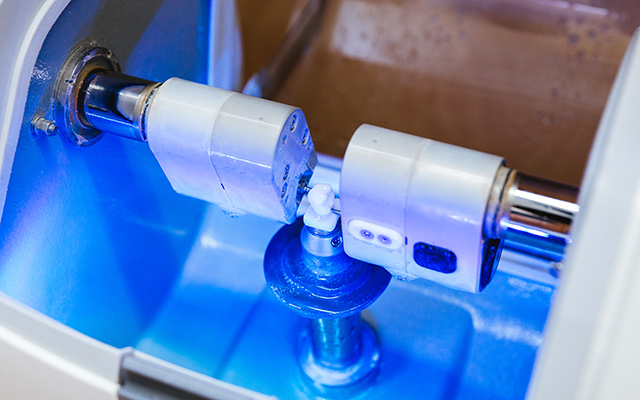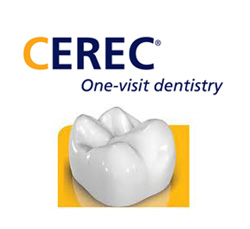The Truth About Cerec
CEREC is an acronym for Chairside Economical Restoration of Esthetic Ceramics. With this technology a dentist can repair damaged teeth in a single appointment using a bonded porcelain restoration.
How does it work?
Cerec uses CAD/CAM (Computer Aided Design/Computer Aided Manufacturing) technology, incorporating a camera, computer, and milling machine in one instrument. It uses a special camera to take an accurate picture of the damaged tooth. This optical impression is transferred and displayed on a color computer screen, where CAD technology is used to design the restoration. Then CAM takes over to automatically mill the restoration out of a solid block of ceramic. The restoration is then bonded to the damaged tooth. The entire process takes about 90 minutes to complete.
How do Cerec restorations compare to a traditional lab fabricated restorations?
Well this is the real question. Are Cerec crowns as good as traditional lab fabricated crowns? Are patients sacrificing quality for convenience and speed? Dr. Johansen used CEREC technology in his practice for almost 14 years, and saw many improvements in sofware, hardware and materials. In the opinion of Dr. Johansen, Cerec is a tool that is very demanding and technique sensitive. In the hands of a master, beautiful restorations can be created and delivered. Without question there are dentists that are able to deliver beautiful restorative dentistry with this technology. Unfortunately, few who use it would be considered masters. The vast majority of the crowns that Dr. Johansen sees come through his practice that would not meet the standard of care, are Cerec fabricated crowns. Poor anatomy and open margins are the most common errors. Sadly we see more bad crowns than good ones. So, if your dentist uses Cerec and is highly skilled, you have nothing to worry about. If however your dentist has average skills, and uses Cerec, buyer beware.
Cerec is comparable to a 2 iron in golf. Anyone can buy it, anyone can use it, not many should. If used correctly a 2 iron can produce amazing golf shots. But not many golfers have the skill set to pull it off. That is the truth about Cerec from someone who has watched it develop from almost the very beginning.
So why did Dr. Johansen stop using Cerec after 14 years? Zirconia. Zirconia is an amazing material for crowns. It is strong, doesn’t require aggressive tooth reduction, is easy to place, and is esthetic. The downside is that it takes a pretty long time to fabricate. The companies that supply Cerec doctors with materials make a zirconia that can be delivered in one visit, but unfortunately it doesn’t look very good. The better the zirconia looks, the longer it takes to fabricate it. According to Dr. Johansen the wait for a lab fabricated crown is justified by it’s improved anatomy, strength, fit and esthetics.
Below are some examples of poorly done Cerec crowns with the mistakes we see most often. Poor anatomy and open margins filled with resin cement.
Click on the pictures below for an enlarged view.
The images below are of zirconia restorations. They can be onlays or crowns. They require less tooth reduction than other materials, are less difficult to cement and are extremely strong.
The following photos are to demonstrate the difference between how teeth are prepared for a crown. The photo on the far left is of an aggressive crown prep with a heavy shoulder. you can see how much tooth has been removed. The middle and far right photos are of a crown prep for a zirconia crown. This type of prep is called a feather edge or vertical preparation and is extremely conservative. This type of preparation can’t be used with Cerec. Cerec requires a more aggressive way of preparing the tooth and is one of the reasons why Dr. Johansen stopped using it in his practice.














